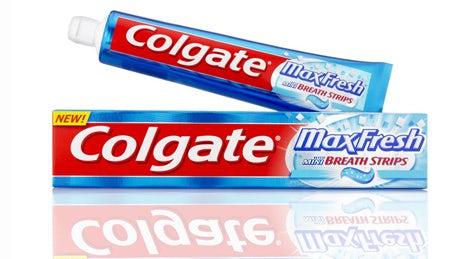Colgate-Palmolive to increase marketing spend to maintain growth
Colgate-Palmolive has trumpeted its marketing and brand building investment for its recent ‘consistent’ sales growth and says it will now ramp up spend at its brands including Colgate, Palmolive and Sanex.

Speaking at a UBS conference in the US yesterday (13 March), Colgate-Palmolive’s chief marketing officer Nigel Burton said the company’s “good, strong, consistent” growth over the past three years has come despite the “economic turmoil” and shows the strength of its brands. The firm revenues increased 2 per cent year on year in the final quarter of 2013.
He added that Colgate-Palmolive will up investment in innovation and spend on marketing campaigns to maintain that growth in the face of mounting competition, particularly in the tooth care category where rivals are encroaching on its market leading position.
“We are in the brand building business. We are about strong brands and those brands require investment, that’s how our business works. We believe and have evidence to suggest that increasing the investment in the brands will help develop growth,” he said.
Colgate-Palmolive currently spends around 15 per cent of its advertising budget on digital but that figure as a proportion of its total spend is increasing, particularly in markets such as the US and UK. That is behind rivals such as Unilever, which invested 17 per cent of its media spend in digital in 2013, and P&G’s 30 per cent spend.
Burton said digital marketing is an increasing focus, particularly for its Hills pet nutrition brand, because of the frequency with which it can engage with a consumer and the “depth” of the message that can be portrayed. However TV advertising still remains “fundamental” because of the scale of its business although it may decline as a proportion of spend.
“We sell 7 billion tubes of toothpaste a year. This is a mass business so we need to reach a lot of consumers to make sure they are aware of and engaged with the brand. TV is still the most efficient way to reach that many people,” he added.
Burton said Colgate-Palmolive is also “increasingly comfortable” investing in in-store marketing and it is upping spend in this area. Giving brands a “retail face” helps to boost engagement and build a sense of value, helping explain the benefits of its products over rivals’ or own brand, he said.
While Colgate-Palmolive is ramping up spend, it is also looking to be efficient. It recently introduced a regional “hubbing” strategy for its marketing. This involves grouping similar countries together, concentrating investment in one lead market – the hub – and using what it learns in other territories.
It is using this approach with the launch of its new anti-cavity toothpaste, which it claims offers 30 per cent more cavity protection by combining fluoride with arginine. It has so far launched the product in three markets – Turkey, Brazil and Malaysia – which will act as test markets before the product is rolled out more widely across Africa/Eurasia, South America and Asia.
In Europe, the UK is leading the charge, with a launch set for later this year.







